top of page
SKI VISION
Mobile app and digital eyewear product system
for GWU New Venture Competition 2024
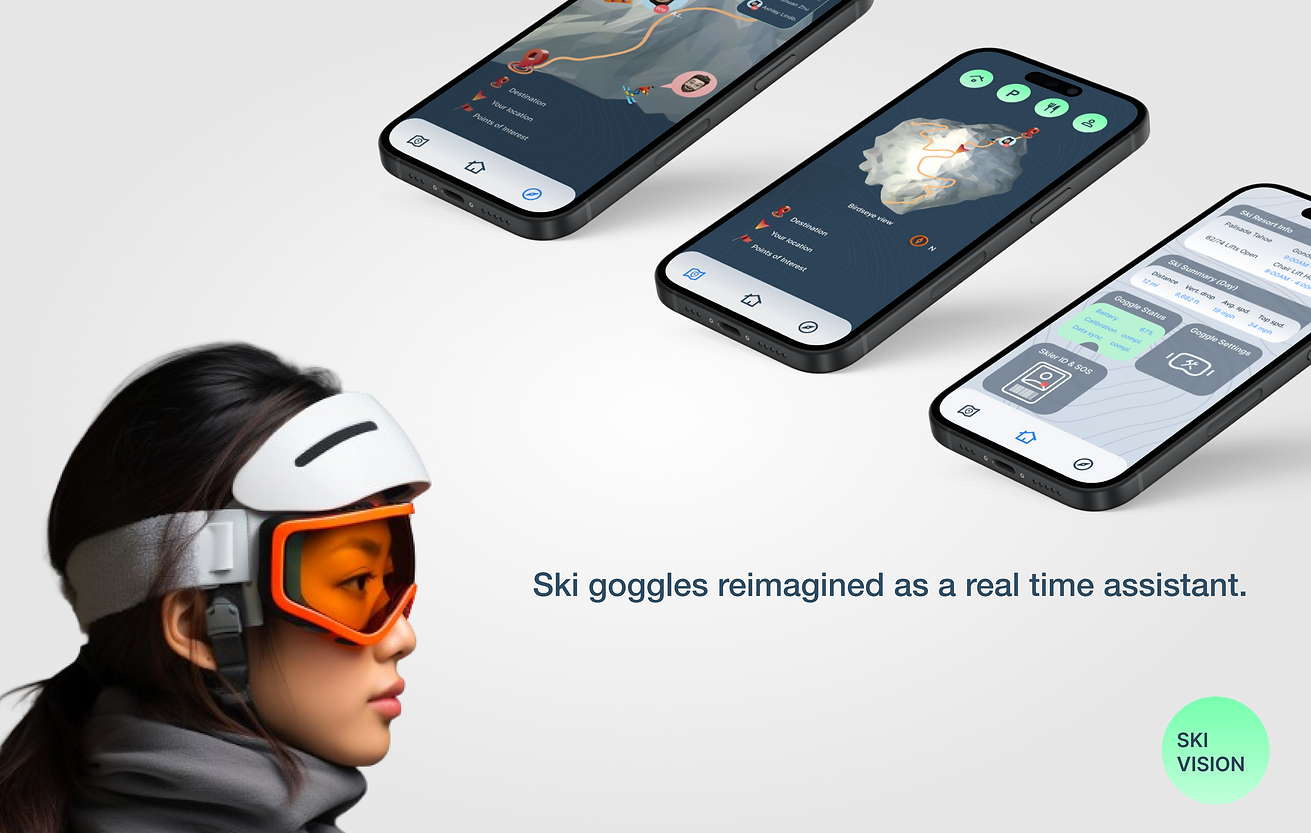
Project Overview
Ski Vision reimagines the traditional ski goggles by incorporating AR and audio-visual aids to enhance rider safety and experience.
This concept design includes a mobile app prototype and a goggle spatial interface demo designed to cater to the typical needs and concerns of skiers and snowboarders when in motion.
Roles
User Research
Product Prototyping
Usability Testing Planning
Project Management
Recognition
2024 GWU New Venture Competition
Explorer Track Semi-finalist
Problems in the Recreational Snow Sports Scene
1,353 total
patients
or 117 annually with severe skiing-related injuries from 2007-2014.
57 fatal
accidents
occurred in Colorado the 2021-22 winter season, 19% increase from the previous season.
30% injuries & fatalities
are caused by collisions with other skiers and stationary objects.
High Physical Risks
collisions account for 40% snowsport accidents annually in the US.Most collisions happen due to the lack of awareness in blindspots
Ineffective Buddy System
indirectly contribute to the high fatality rates since buddies
can assist in emergency support, injury prevention, and
offer additional awareness.
Top Pain Points According to 8 Generative Interviews

Heavy Logistical Effort
is essential and cannot be avoided to ensure a safe and
enjoyable ski experience.

How might we cultivate a safer riding experience while reducing mental load for snow enthusiasts without adding to the existing challenges?
Design Goals
1

Improve blindspot
and hazard awareness
2

Enhance buddy system
in the context of skiing
3

Reduce mental load
Product Strategy
This simplified information architecture of the goggle and the app show how the 2 devices interact and compliment each other.
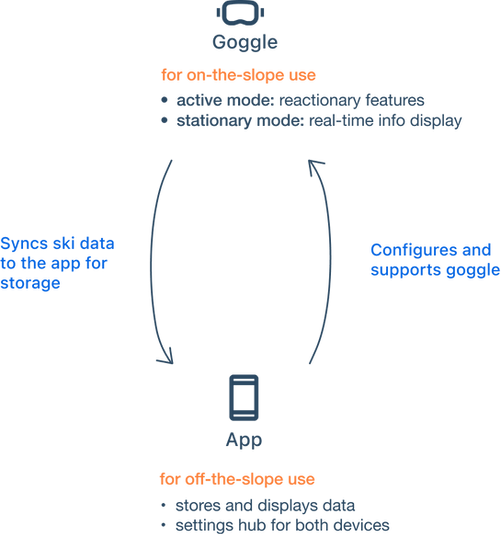
Feature Mapping
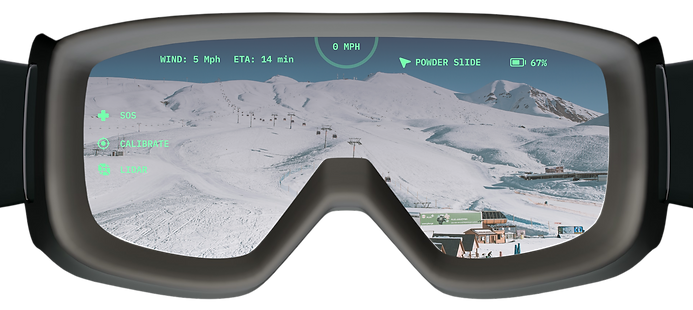
3D Trail Map
(primary)
Navigation
(primary)
SOS
(secondary)
Visual-Audio
Cues
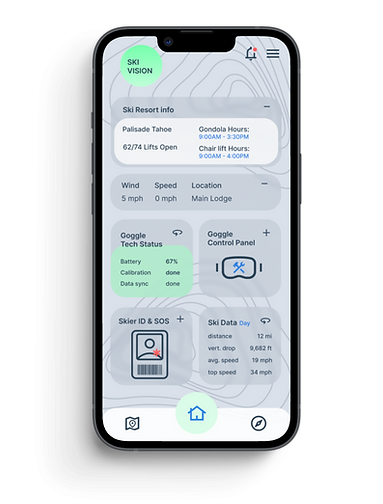
3D Trail Map
(secondary)

App Settings
Navigation
(secondary)

Goggle Settings
SOS (primary)

Data Storage
Rationale: secondary access point for key features in case goggle runs out of battery or gets damaged.



Design Goal 1: Improve Blindspot and Hazard Awareness
Opportunities of Prevention and Intervention

Visual Iteration of
Reactionary Indicators in Motion

Indicator 1: Blindspot Detector (Uphill of User)
Version 1: Flashing Warning Badge
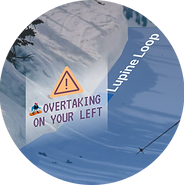
Iteration rationale: badge size too large, unnecessary visual obstruction, text is hard to read within seconds while badge is flashing
Version 2: Subtle Arrows in Increasing Opacity

Style 1: Rounded

Style 2: Pointy
Iteration rationale: The tip of the arrow indicates the direction of approaching overtaker, but visual take up significant space, potential point of contact needs more precision.
Version 3 (Final): Stroked Arrow With a Warning Icon

Start State:
Growing Arrow Indicator
rationale: to show the direction of the approaching overtaker
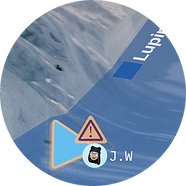
Friend State*
Growing Arrow Indicator
rationale: to show that the overtaker is a friend of the user

End State:
Enlarged Arrow Indicator
rationale: to show that the approaching overtaker is getting closer
Indicator 2: Unsafe Distance Measurer (Downhill of User)
Version 1: Distance Ruler + Warning Icon
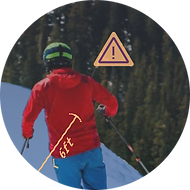
Iteration rationale: both color and ruler are hard to see
Version 2: Rectangle Highlight + Warning Icon

Iteration rationale: the size of a rectangle around a person is too large, which can be distracting
Version 3: Bracket Highlight + Subtle Warning Icon
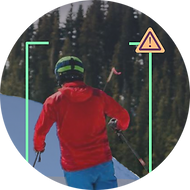
Iteration rationale: the warning icon is redundant in another feature, there are more optimal ways to visually convey urgency and prompt precaution.
Version 4(Final): Bracket Highlight + Moving Target

Rationale: braket highlight around downhill skier if less than 6 ft away from the goggle user, and the orange moving target under the user works as a distance measurer, different opacity level indicates 3 levels of alertness within the safe distance.



Design Goal 2 : Enhance Buddy System
Potential Impact of a More Effective Buddy System

Users’ direct network:
High visibility of buddy location
and status provides accountability despite not always being in close proximity.
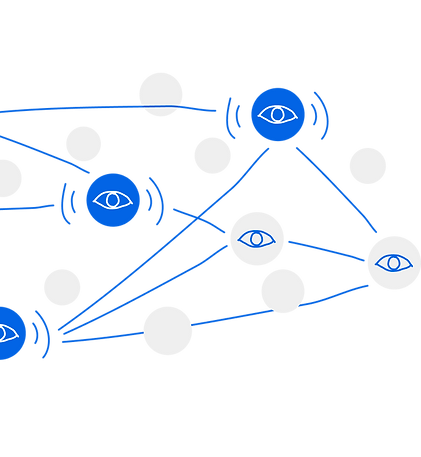
Users:
Collision preventing features,
buddy locator, and SOS alerts
(visible in the buddy network)

Users’ community:
-
Higher vigilance of surrounding hazards
-
Movement informed by predictive alerts
-
Increased visibility in blindspots
Real-Time Buddy Location + Status Embedded in Resort map
Increased visibility means increased vigilance, which translates to faster accident responses on the slopes.
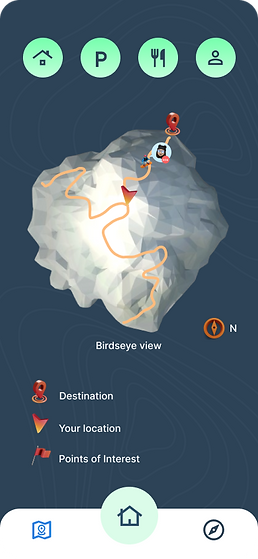
map feature landing screen
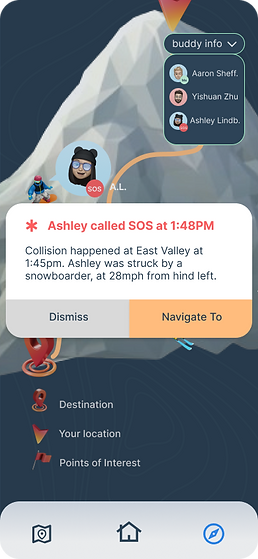
receiving an SOS message

navigate to SOS message sender
Sending and Receiving SOS
Internal and external messaging tool, directly facilitates rescue efforts.

In-session messaging inbox

SOS message sent to Ski Patrol
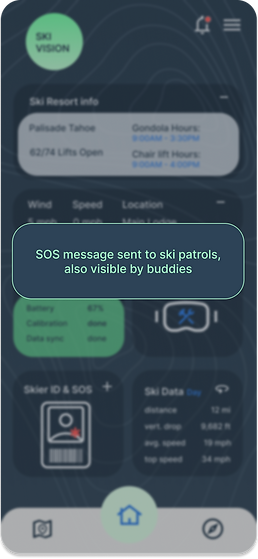
Message sent confirmation



Design Goal 3 : Reduce User Mental Load
User-Centric User Journey + Task Flows
Relevant Information and tools placed strategically for easy access in both devices at every scenario to simplify the task flow

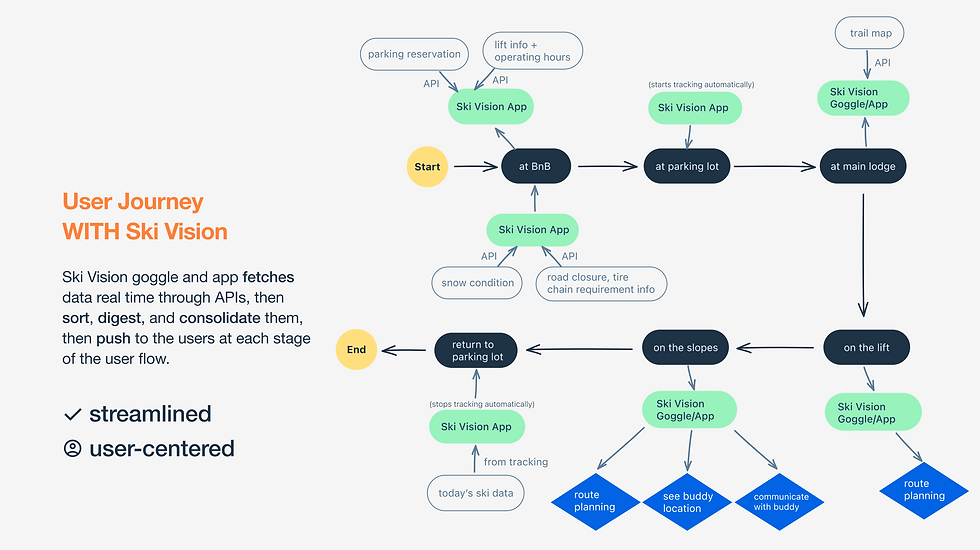
Goggle Heads Up Display Menu Items
Minimal Yet High Impact
Goggle Heads-Up Display's Primary Menu
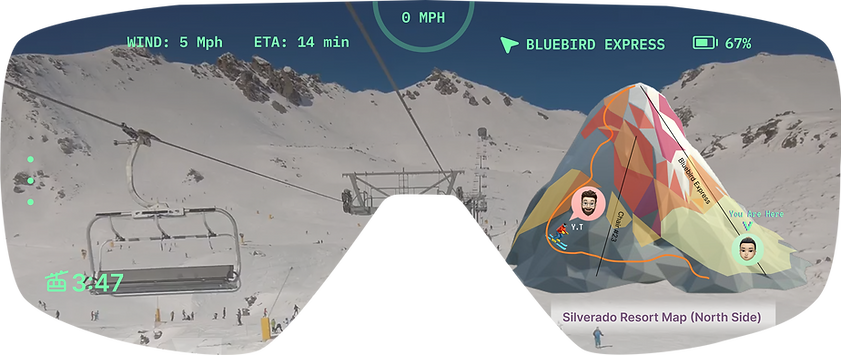
Wind
ETA
Speed
Location
Bettery Life
Lift Timer
Wind condition has a high impact on the rider’s route choices, since high winds can cause lift to stop operating.
ETA shows the estimated time arrival when user navigates
Maintain users awareness of his/her real time speed
Real-time location indicate’s user’s location for both user and user’s friends
Maintains user’s expectations of losing access to goggle’s features
Timer shows remaining time on lift
Goggle Heads-Up Display's Secondary Menu

SOS
Calibrate
LiDAR
For sending out SOS messages to friends and/or ski patrols
Common and necessary feature in wearable devices to ensure accurate spatial computing
A developing feature designed to improve visibility in foggy conditions
App Home Screen Is a Dashboard
with Key Info and Tools
user able to make quick decisions with convenient access
to available key info all in one place
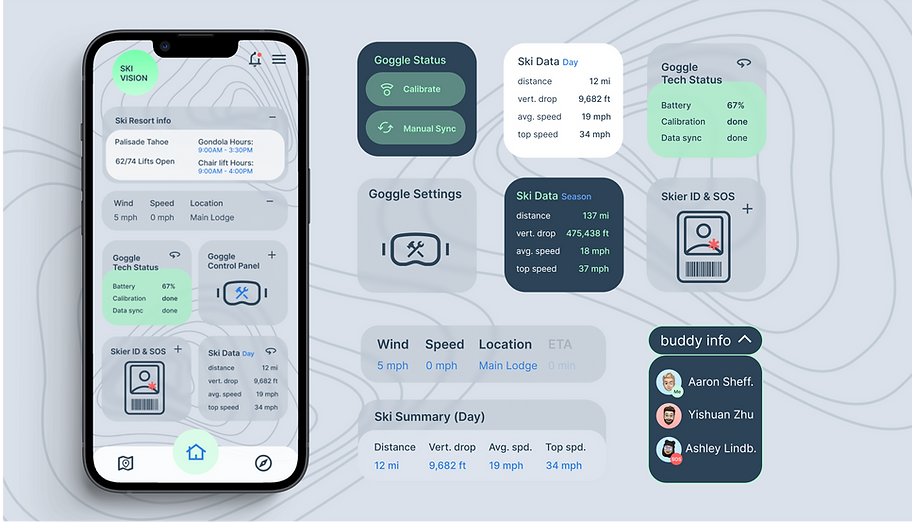
Product Success Criteria
How do we validate how well these features solve the overarching problem we defined?
1. Lower Collision Rate in user’s direct network
2. Shorter SOS response time for members in user’s direct network
3. User's effective slope time increases
Assessing Product Effectiveness: Usability Testing Plan and Rationale
Is collision rate lower with this product than without?
Usability Testing Topic 1: how quickly does user react to predictive alerts?
Measure and tally the occurrence with motion sensors:
-
Sudden drop in speed immediately after predictive alerts
-
Making an abrupt maneuver immediately after predictive alerts
-
Overall collision rate with product vs. overall collision rate without product
Rationale: strong correlation between users’ reactions to predictive alerts validates the functionality of collision prevention features, if this test shows a lower overall collision rate than its control group (without product), then this success criteria is met
How soon does SOS message sender get help?
Usability Testing Topic 2: How quickly does user show up to his/her friend after receiving their SOS messages and vice versa?
Detect user’s usage of the “navigate to friend” feature after a friend sends out a SOS message, and measure the time gap between user receiving the SOS message and arriving at sender’s location. (and vice versa)
Does user get more active slope time out of each ski day?
Usability Testing Topic 3: Does user spend less time fetching information or troubleshooting before and during active slope time?
-
Track user’s in-resort active slope time, compare with control group
-
Track user’s in-resort idle time, compare with control group
Quantitative:
-
How many times does user stop to check the resort’s paper map?
-
How many times does user stop to check the resort’s billboard map?
-
How many times does user search for the resort’s information (including but not limited to lift operation hours, resort hours, transportation info, access to amenities, location of amenities)
Qualitative:
-
Does user feel overall less distracted?
Challenges & Limitations
1
AR interface takes longer to prototype and test
Usability data are more valuable when prototypes are of higher fidelity, however 3D prototypes take much longer than 2D so test frequency has to be compromised when project duration is fixed
2
Data infrastructure design underpins product framework
Although not visible in the front end, database infrastructure and analytics is very necessary to this project, however I currently have only a surface level understanding of this topic
3
Fewer design guidelines to reference
Until industry leaders such as Apple’s Human Interface Guidelines are released for Vision OS in Q1 2024, there were not a lot of design guidelines to reference
4
Need compatible hardware to test the goggle prototype
Designing software for hardware that doesn’t yet exist requires a lot of imagination and constant reality checks, affecting both prototyping and usability testing
5
Regression testing is
necessary
Regression testing is necessary to verify wether goggle features are distracting compared to experience with regular ski goggles
6
Hardware-software integration is challenging
Compatibility testing and adjustments are necessary, hardware and software experts to constantly collaborate to bypass limitations
Next Steps
More testing for data informed decisions to improve features
Explore more cost-
and time-efficient solutions
Discover more niche user segments & understand their pain points

Explore More Projects
bottom of page

